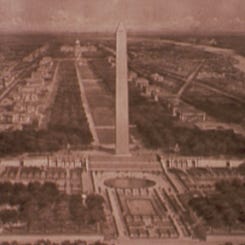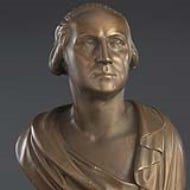#76: CIVICS 101: The Legislative Branch
Q&A #76: What are joint sessions and joint meetings?
Our American Government
Our American Government is a small book published by the House of Representatives for citizens and those who seek a greater understanding of the American interpretation of democracy. It follows a question-and-answer format and covers a broad range of topics dealing with the three branches of our Government, the electoral process, and the role of political parties.
The Savvy Citizen is reproducing the 169 questions-and-answers through a series of posts called Civics 101. Each post will contain the Q&A as well as some additional commentary to add historical context, fun facts, or anything we believe will add to our collective understanding of these topics.
Think of it as your adult Civics class but without the test!
Let’s keep at it.
SECTION: The Legislative Branch: The Congress
Congressional Rules and Procedures
Q&A #76: Are the proceedings of Congress published and preserved?
Congress holds joint sessions to receive addresses from the President (e.g., State of the Union and other addresses) and to count electoral ballots for President and Vice President. Congress also holds joint meetings to receive addresses from such dignitaries as foreign heads of state or heads of governments or from distinguished American citizens.
Of the two types of gatherings, the joint session is the more formal and typically occurs upon adoption of a concurrent resolution passed by both Houses of Congress. The joint meeting, however, typically occurs when each of the two Houses adopts a unanimous consent agreement to recess to meet with the other legislative body. Since 1809, the prevailing practice has been to hold joint sessions and joint meetings in the Hall of the House of Representatives, the larger of the two Chambers.
Except for the first inauguration in 1789, in which the Congress convened in joint session to inaugurate President George Washington, these special occasions have occurred outside of the regular legislative calendars. Occasionally one chamber will convene a legislative session prior to attending the ceremony, but unless both do so and subsequently adjourn to attend the ceremony, the inauguration is not a joint session.
My Thoughts
Here’s an historial highlight on joint sessions from the history section of the House’s website:
On [February 21, 1885] the House and Senate met in a Joint Session to commemorate the completion of the Washington Monument. The movement to construct a monument in Washington’s honor began in 1783, when a volunteer association suggested erecting a memorial in the new capital city.
Formed in 1833, the Washington National Monument Society included luminaries such as John Marshall and James Madison of Virginia. Funded by a combination of private donations and federal appropriations, the monument was built in fits and starts between 1848 and 1861. The Civil War and a lack of funding suspended the project from 1861 to 1876.
In August 1876, Congress passed a concurrent resolution that appropriated $2 million to complete the monument. Due to the weak structural foundation, it still took builders almost nine years to finish it. Commemoration ceremonies began at the monument grounds.
Senator John Sherman of Ohio, chairman of the Joint Congressional Committee for the Monument, noted that the 555-foot high, 55-foot wide edifice was “simple in form, admirable in proportions, composed of enduring marble and granite, resting upon foundations broad and deep…” A parade then proceeded down Pennsylvania Avenue toward the Capitol. Minute guns fired salutes simultaneously from the monument, the Navy Yard in Southwest Washington, D.C., and Fort Myer in northern Virginia.
The commemoration ceremonies in the House Chamber included Members of Congress, executive branch officials, and descendants and relatives of George Washington. Former Speaker Robert Winthrop of Massachusetts, whose comments were read to the Joint Session, said, “those of us…who have followed the slow ascent of the stupendous pile, sometimes with hope and sometimes with despair, its successful completion is…an unspeakable relief, as well as a heartfelt delight and joy.”
—
Back next time with Q&A #77: May the Secretary of State or any other Cabinet officer appear on the floor of either House to answer questions?
Meanwhile, don’t forget that we’re organizing the post links on a single page available here.
xo,
Kelley for the Savvy Citizen Team
April 9, 2025





